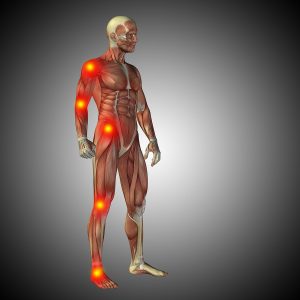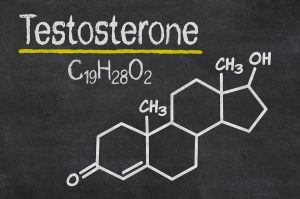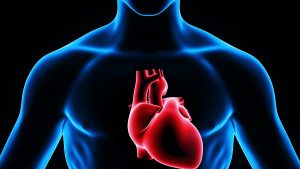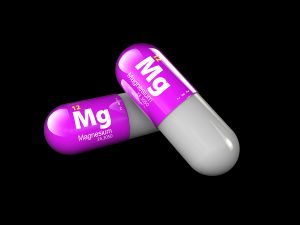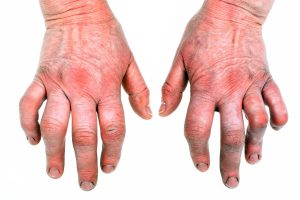Dr. Hal Blatman gave a talk about when food causes inflammation. He gave his talk on Dec. 9 at the 24th Annual World Congress on Anti-Aging Medicine (Dec. 9-11, 2016) in Las Vegas that I attended. The original title was “Food, Pain and Dietary Effects of Inflammation”.
Dr. Blatman is the medical director of Blatman Health and Wellness Center, Cincinnati and Batman Medical Services, Manhattan.
General remarks about nutrition
Dr. Blatman pointed out that mistakes of nutrition are often behind chronic diseases and illnesses. The physician’s task is to explain to patients how they can change their food intake to improve inflammation in the body and to allow the body to heal itself.
Hippocrates said 400 BC “Let food be thy medicine and medicine be thy food”.
In this context Dr. Blatman stated that nutrition could exacerbate symptoms or relieve symptoms and there must be rules for good nutrition. If we do not take care of our nutrition, the gut flora composition changes and causes leaky gut syndrome. But if we consume healthy foods all of this improves.
Mathematical formula for when food causes inflammation
To make it easier to understand the impact of food on our health the speaker offered this formula:
G-B+R=P
G = stands for good, beneficial things you can put into your body.
B = bad, toxic things that affect your body negatively.
R = reserves that your body has since birth (minus the amounts you have used up)
P = pain and problems you are going to experience
It is P (pain and other medical problems) what brings the patient to see the doctor. G and B is what the patient can change. When done right, the P value in the formula reduces and the pain or medical problems go away.
Nutritional rules
Dr. Blatman said there are three rules about nutrition.
Rule #1 is to not eat fake or toxic foods
He listed NutraSweet, Splenda, Saccharin, margarine and olestra.
Aspartame
Aspartame experiments on rats showed that it can cause cancer: Dr. Blatman said that aspartame causes multiple myeloma and Hodgkin’s lymphoma in man. Aspartame worsens depression, 10% is metabolized in the liver into methanol, a nerve poison.
Splenda
Splenda (sucralose) originates from sugar. However, several chlorine atoms were inserted into the sugar molecule. It reduces beneficial microflora in the gut. It also interacts with liver enzymes, which interfere with the bioavailability of oral drugs.
Saccharin
Saccharin alters gut bacteria and increases glucose tolerance.
Hydrogenated fat and margarine
Insects don’t eat margarine, mold will not grow on it, and it will not support life. Merchants like it because food does not turn stale on shelves. Hydrogenated fats like margarine are like poisons. They raise the bad LDL cholesterol levels and reduce beneficial HDL cholesterol levels. The prostaglandin balance changes so that inflammation occurs. There is increased evidence of diabetes and the cell membrane composition changes. Proinflammatory cytokines can cause pain in the dorsal root ganglions. It follows from all of this that it is best to cut out all hydrogenated fat and margarines.
Partially hydrogenated vegetable oil
The cell membrane consists of two lipid layers at a specific ratio of omega-6 essential fatty acids and omega-3 essential fatty acids. It also contains triglycerides, phospholipids and protein. Cell membrane absorb nutrients to move into the cell and eliminate waste out of it. The cell membrane needs to remain flexible and within neurons needs to transmit electrical information. The membrane composition is critical for the cell membranes to perform optimally. It is here that the physician has to explain this to the patient. All the fats we eat are the raw material, which will make up our cell membranes. So what fat we eat that day travels into the cell wall that becomes part of it that day. The same process occurs with cell wall repair. If we eat hydrogenated fat that day, it travels into the cell wall. A membrane with hydrogenated fat will:
- Not transmit nutrients inside the cell
- Will not transmit waste out
- Causes the membrane to lose flexibility
- In a nerve cell there will be abnormal neuron transmission
If we eat hydrogenated fat, we become like a “genuine GM truck fixed with inferior parts”, so Dr. Blatman. The interesting observation is that it takes 4 months after eliminating hydrogenated oil from the diet to get it out from red blood cells. Be aware that French fries increase pain for 4 months, so why eat them?
Olestra
Olestra, an artificial fat: This fat, Olestra has been developed as an artificial fat and is used in chips. It can cause diarrhea, abdominal cramps and weight gain with long-term use. Olestra belongs into the group of fake/toxic foods. Don’t eat Pringles or chips that are made with this.
Healthy oils
There are two types of essential fatty acids, omega-6 fatty acids and omega-3 fatty acids. Many processed foods contain only omega-6 fatty acids, because this is the cheapest way to produce them (they are based on vegetable oils). Instead you want to eat healthy fats like omega-3 fatty acids contained in nuts and fish. You can also add molecularly distilled, high potency omega-3 fatty acids (purified fish oil) as a supplement to help restore the balance between omega-6 and omega-3 in your food intake. Avoid omega-6 fatty acids from corn oil, safflower oil, grape seed oil, soybean oil, cottonseed oil, canola oil and peanut oil.
Metabolism of omega-6 fatty acids versus omega-3 fatty acids
Compare the metabolism of omega-6 fatty acids with that of omega-3 fatty acids.
The linoleic acid of omega-6 fatty acids gets metabolized into arachidonic acid, which causes pro-inflammatory mediators, PGE2 and LTB4. On the other hand with omega-3 fatty acids alpha-linolenic acid (ALA) is metabolized into EPA, DHA and the anti-inflammatory mediators PGE3 and LTB5.
It is easily understandable why a surplus of omega-6 fatty acids from processed foods will disbalance the omega-6 to omega-3 ratio. This ratio should be 1:1 to 3:1, but many Americans’ omega-6 to omega-3 ratio is 6:1 to 18:1. Omega-6-fatty acids cause arthritis, heart disease and strokes. Be particularly careful in avoiding soybean oil, which is the most popular oil in the last few decades to foul up the omega-6 to omega-3 ratio through processed foods.
Balance of omega-3 and omega-6 fatty acids
When it comes to balancing omega-3 and omega-6 fatty acids in your diet, be aware that nutritional balancing can help you restore the ideal omega-6 to omega-3 ratio of 1:1 to 3:1. An easy way is to cut out processed foods as much as possible. Supplement with molecularly distilled fish oil capsules to add more omega-3 fatty acids into your food intake. Dr. Blatman gave the example of rheumatoid arthritis patients that were put on omega-3 supplements. After 24 weeks their joint swelling and tenderness went down.
Rebalancing the omega-6 to omega-3 ratio was able to treat depression as this research showed. This makes you wonder how much depression may be caused by overconsumption of processed food.
Suggested doses of omega-3 fatty acid supplementation
Dr. Blatman suggested the following doses of omega-3 supplementation for various purposes:
- 1 gram/day as supplementation for healthy adults with a good diet
- 1-3 grams/day for people with cardiovascular disease
- 5-10 grams/day for patients with an autoimmune disease, with chronic pain or with neuropsychiatric conditions
He mentioned that these doses are empirical, but in his opinion definitely help. Due to quality differences he suggested that you buy fish oil capsules in a health food store where the quality is best. Stay away from discount stores (the quality is the worst) and drug stores.
Other healthy oils are olive oil and coconut oil. They are also useful for cooking.
Rule #2 is not to eat inflammatory foods
Our body functions like a luxury car; it needs pure food to function. Anything less leads to inflammation, particularly when you eat sugar and processed foods.
Inflammatory foods are sugar, white flour, fruit juice and white/red potatoes. A medium potato=1/2 cup of sugar! Other problematic foods are wheat grain contained in breads, pasta, cereal and thickeners in soups and sauces.
What is the problem with these foods? They break down the zonulin proteins that are a bridge between the lining cells of the gut.
This leads to an increase of intestinal permeability, and leaky gut syndrome can develop. Inflammatory cytokines from visceral fat add to the gut inflammation, and cardiovascular disease and high blood pressure can develop.
Fried potatoes, in particular the consumption of French fries, have been identified as the cause of inflammatory bowel disorder (IBD). Countries with the highest consumption of French fries have the highest incidence of IBD.
A Mediterranean diet and the DASH diet are anti-inflammatory diets.
Rule #3 is to not disturb the bowel flora
A healthy bowel flora is symbiotic with the body. You achieve this by eating green leafy vegetables. A toxic flora from dysbiotic microbes comes from eating white flour, white sugar and red meat. Red meat leaves residues on which dysbiotic bacteria thrive.
Symbiotic gut bacteria produce vitamin K, cobalamin, pyridoxine, biotin, riboflavin, pantothenic acid and short fatty acids. They also degrade metabolic toxins, prevent pathogens from colonization and they stimulate the immune system to mature.
Dysbiosis occurs when the wrong diet consisting of sodas, white flour, sugar and red meat is over consumed. There are toxins that are produced by the dysbiotic microbes. These injure the bowel wall and make the immune system work harder. Immune system dysfunction, fatigue and fibromyalgia can follow.
Dr. Blatman stated that gut dysbiosis that causes leaky gut syndrome could also cause ulcer disease, diabetes, heart disease, fibromyalgia, chronic fatigue syndrome, chronic pain and even cancer.
Conclusion
This was a whirlwind tour through a talk given by Dr. Blatman during the 24th Annual World Congress on Anti-Aging Medicine (Dec. 9-11, 2016) in Las Vegas. What food we eat determines what gut bacteria we harbor, symbiotic ones or toxic ones. This in turn determines which way our health develops. But the content of what we eat is also important. If we consume processed foods we end up consuming way too many omega-6 fatty acids, which cause inflammation, arthritis and heart disease. This is happening in front of our eyes, if we start seeing things the way they are. I was aware of this since the mid 1990’s. In a lecture I attended at a continuing education conference a cardiologist pointed out that inflammation was the determining factor of whether or not our patients would get a heart attack.
Cholesterol concept being replaced by inflammation concept
The lecturer mentioned then that the older cholesterol concept would be replaced by the newer inflammation concept. He was right, but it goes even further! There is the important omega-6 to omega-3 ratio, and fish oil supplementation helps. At the same time it is necessary cutting out processed foods. But there is the newer insight that our bowel flora and red meat consumption can culture toxic bacteria in our own gut. It is in our power to start eating more vegetables and cut out sugar and starchy food. It is time to see chips and French fries not as a “convenience” but a hazard to your health. Food does not have to cause inflammation; right food choices will help us to stay well and live longer.
